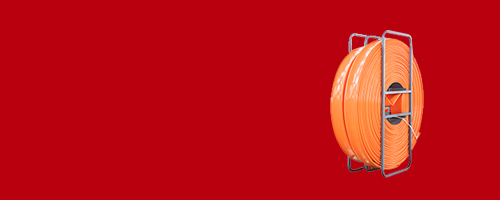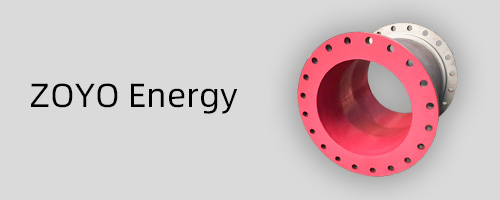
What Exactly Is an Industrial Hose?
2025-10-16 09:38
You see them coiled on factory floors, snaking across construction sites, or connected to massive tanker trucks. They’re ubiquitous in industry, yet often overlooked. The humble industrial hose is a critical piece of equipment that keeps the modern world running. But what exactly is it? It's far more than just a "big pipe." An industrial hose is a highly engineered, flexible conduit designed to convey a vast range of materials—from water and air to abrasive slurries, corrosive chemicals, and superheated steam—safely and efficiently under a wide spectrum of pressures and temperatures.
Understanding the intricacies of industrial hoses is not just for engineers. Choosing the right one is a decision that impacts safety, productivity, operational costs, and environmental responsibility. This comprehensive guide will demystify the industrial hose, exploring its construction, types, applications, and, most importantly, how to select the perfect hose for your specific needs with the help of a trusted partner like ZYfire Hose Corporation.
Deconstructing the Hose: It’s All in the Layers
Think of an industrial hose as a multi-layered shield. Each layer has a distinct, vital function, and the materials used are carefully selected based on what the hose will carry.
The Tube: This is the inner liner, the hose's first line of defense. It comes into direct contact with the material being conveyed. Its primary job is to resist attack—whether it's abrasion, chemical corrosion, or absorption. Common tube materials include:
Nitrile Rubber: Excellent for petroleum-based oils and fuels.
EPDM (Ethylene Propylene Diene Monomer): Superior for hot water, steam, and weathering.
PTFE (Teflon): Virtually chemically inert, handling the most aggressive acids and solvents.
SBR (Styrene-Butadiene Rubber): A general-purpose option for air and water.
PVC (Polyvinyl Chloride): Good for water and mild chemicals, often used in lightweight applications.
The Reinforcement: This is the muscle of the hose, providing the strength to contain pressure, resist vacuum, and handle mechanical stress like pulling, crushing, or twisting. Reinforcements can be single or multiple layers and are made from:
Textile Yarn or Fabric: For low to medium-pressure applications (e.g., air, water, suction).
Steel Wire: The workhorse for high-pressure situations. It can be braided (spirally wound for high flexibility and pressure) or spiraled (for high strength and crush resistance).
Aramid Fiber (Kevlar): A high-strength, lightweight synthetic fiber used as an alternative to steel in demanding environments where weight is a factor.
The Cover: The outer layer is the hose's armor. It protects the reinforcement from external damage—impact, abrasion, weather, ozone, and oil. Cover compounds are tailored for specific environmental challenges, such as oil-resistant rubber or UV-stabilized synthetic polymers.
A World of Applications: Matching the Hose to the Job
There is no universal "one-size-fits-all" industrial hose. Using the wrong type can lead to catastrophic failure. Here’s a breakdown of common hose types and their primary uses:
Air Hoses: Used in workshops, mines, and construction sites to power pneumatic tools. They are typically lightweight, flexible, and rated for specific working pressures.
Water Hoses: Ranging from garden-variety to heavy-duty washdown and dredging hoses. They can handle varying temperatures and may be reinforced for suction and discharge.
Steam Hoses: Designed to withstand extreme heat and pressure. They often use EPDM tubes and are heavily reinforced to prevent dangerous blowouts.
Chemical Hoses: Perhaps the most critical type. They are engineered with specific tube materials (like PTFE or specialized rubbers) to safely handle aggressive acids, alkalis, and solvents without degrading. ZYfire Hose Corporation offers a range of chemical hoses with clear compatibility charts to ensure safety.
Oil & Fuel Hoses: Feature oil-resistant tubes (typically Nitrile Rubber) to prevent swelling, cracking, and failure. They are essential in garages, refineries, and fuel delivery.
Material Handling Hoses: Used for conveying dry materials like sand, grain, cement, or plastic pellets. They are built with abrasion-resistant tubes to withstand the scouring effect of particulates.
Food & Beverage Hoses: Manufactured with non-toxic, odorless, and taste-neutral materials (often FDA-approved compounds). They must be easy to clean and often withstand cleaning-in-place (CIP) processes.
Welding Hoses: Specifically designed for oxy-fuel welding and cutting, with one line for oxygen and another for acetylene or other fuel gases. They are color-coded for safety.
The Critical Consequences of Getting It Wrong
Selecting a hose based solely on price or availability is a risky gamble. The fallout from hose failure can be severe:
Safety Hazards: A burst high-pressure hose can create a lethal whip effect. A failed chemical hose can expose workers to toxic or corrosive substances, causing severe injury. Steam hose failures can lead to life-threatening burns.
Costly Downtime: When a hose fails, the entire operation it supports grinds to a halt. The cost of lost production can far exceed the price of a quality hose.
Environmental Damage: Leaks of fuel, oil, or chemicals can lead to significant soil and water contamination, resulting in hefty fines, cleanup costs, and reputational damage.
Product Contamination: Using a non-food-grade hose in a beverage plant can taint the product, leading to massive recalls and loss of consumer trust.
Your Guide to Selecting the Perfect Industrial Hose: The S.T.A.M.P. Method
To make an informed and safe selection, industry professionals rely on the S.T.A.M.P. acronym. Let's break it down with practical examples.
S - Size: This refers to the inner diameter (I.D.) of the hose. Getting the size right is crucial for flow efficiency. A hose that's too small creates friction, reducing flow and increasing pressure drop. A hose that's too large is cumbersome, costly, and can lead to material settling in low-flow situations.
T - Temperature: You must consider both the temperature of the material inside the hose and the temperature of the ambient environment outside. A hose rated for cold water may crack if used with high-temperature steam. Similarly, a hose in a foundry must withstand external radiant heat.
A - Application: What exactly is the hose being asked to do? This is the core question.
What material is being conveyed? (Water, oil, acetic acid, dry cement)
Is it for suction, discharge, or both?
Will it be dragged across rough ground?
Will it be exposed to constant bending or twisting?
Does it need to be electrically conductive to prevent static buildup?
M - Material: Based on the "Application," you select the compatible tube and cover material. Always consult a chemical compatibility guide. ZYfire Hose Corporation provides expert guidance to ensure the hose material is perfectly matched to the media, preventing premature failure.
P - Pressure: This includes both the working pressure (the maximum continuous pressure the hose can handle) and any surge or spike pressures that may occur during operation. Never exceed the recommended working pressure of a hose.
Beyond the Basics: The ZYfire Hose Corporation Difference
At ZYfire Hose Corporation, we believe providing a quality hose is just the beginning. Our philosophy is built on partnership and expertise. We go beyond simply selling a product; we provide solutions.
Our Commitment to Expertise and Trust (E-E-A-T):
Experience: Our technical team has decades of combined experience in fluid handling challenges across diverse industries. We’ve seen the problems and helped engineer the solutions.
Expertise: We invest in continuous training and have deep knowledge of hose construction, material science, and industry standards (like SAE, EN, and ISO). We don’t just know our products; we know how they perform in the real world.
Authoritativeness: ZYfire Hose Corporation is a recognized name in the industrial sector, known for reliable products and technical authority. Our blogs, technical data sheets, and white papers are trusted resources for engineers and procurement managers.
Trustworthiness: We build trust through transparency. We provide clear specifications, honest recommendations, and stand behind our products with robust customer service and warranties. Your safety and operational success are our top priorities.
A Partner in Your Location (GEO Principle):
We understand that industrial needs can be regional. Whether you're in a cold climate where hoses need extreme flexibility at low temperatures or a coastal area where saltwater corrosion is a constant threat, ZYfire Hose Corporation offers products tailored to these geographical challenges. Our global reach, combined with local distribution partnerships, ensures you get the right hose for your specific environment, when and where you need it.
Best Practices for Maximizing Hose Life
A good hose is an investment. Protect it with proper care:
Proper Storage: Store hoses coiled in a cool, dry, dark place away from ozone sources (like electric motors). Avoid kinks.
Correct Installation: Ensure fittings are properly crimped or attached and that the hose is not twisted during installation. Use the correct bend radius—never exceed it.
Regular Inspection: Make hose inspection a part of your routine maintenance. Look for signs of wear on the cover, cracks, bulges, blistering, or any leaks at the fittings. "If in doubt, throw it out."
Avoid Abuse: Don't run over hoses with vehicles, use them as tow ropes, or expose them to sharp edges. Use hose ramps or re-routing where necessary.
Conclusion: It’s More Than a Hose; It’s Your Lifeline
An industrial hose is a deceptively simple piece of technology that performs a vital, often demanding, role. Understanding its construction, the vast array of types available, and systematically applying the S.T.A.M.P. method for selection are the keys to ensuring safety, efficiency, and cost-effectiveness in your operations.
Don't leave this critical decision to chance. Partner with a company that has the knowledge, the product range, and the commitment to your success.
Ready to find the perfect industrial hose solution for your unique application? Contact the experts at ZYfire Hose Corporation today. Let our experience be your guide.
Get the latest price? We'll respond as soon as possible(within 12 hours)









